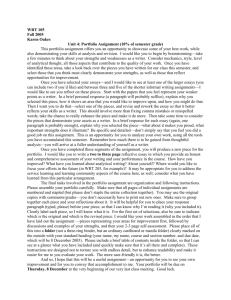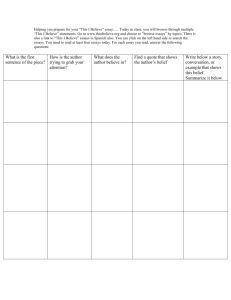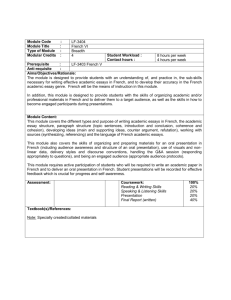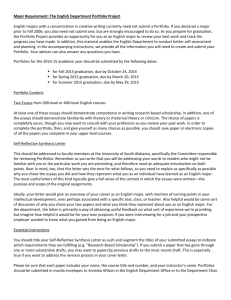Final Portfolio Cover Letter Assignment
advertisement
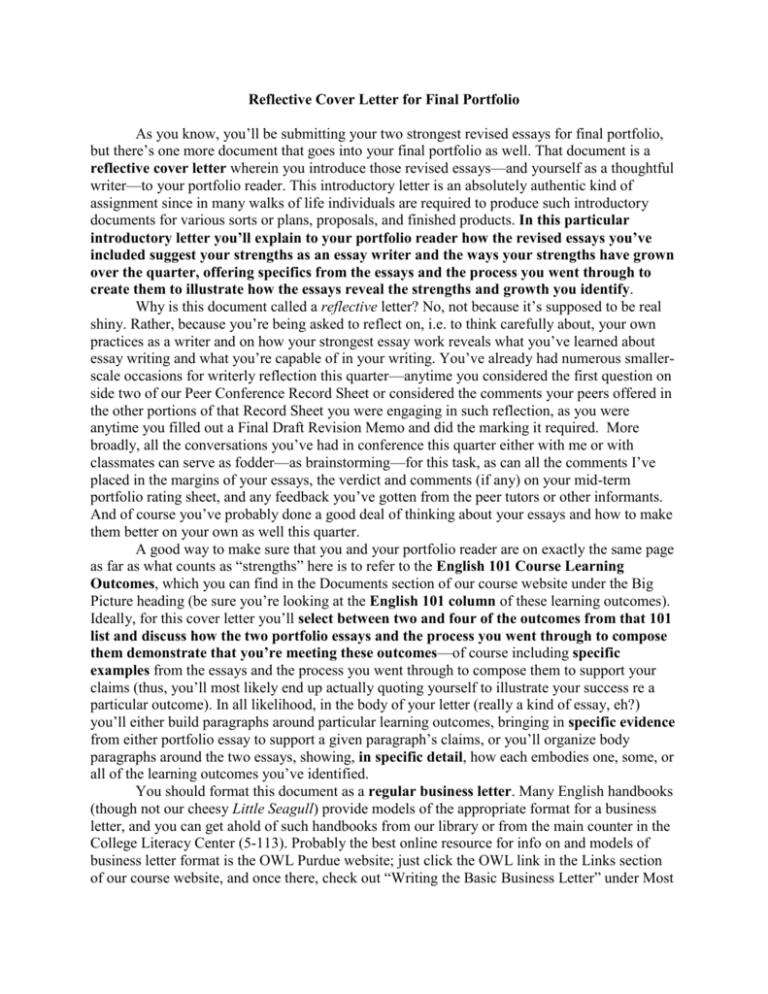
Reflective Cover Letter for Final Portfolio As you know, you’ll be submitting your two strongest revised essays for final portfolio, but there’s one more document that goes into your final portfolio as well. That document is a reflective cover letter wherein you introduce those revised essays—and yourself as a thoughtful writer—to your portfolio reader. This introductory letter is an absolutely authentic kind of assignment since in many walks of life individuals are required to produce such introductory documents for various sorts or plans, proposals, and finished products. In this particular introductory letter you’ll explain to your portfolio reader how the revised essays you’ve included suggest your strengths as an essay writer and the ways your strengths have grown over the quarter, offering specifics from the essays and the process you went through to create them to illustrate how the essays reveal the strengths and growth you identify. Why is this document called a reflective letter? No, not because it’s supposed to be real shiny. Rather, because you’re being asked to reflect on, i.e. to think carefully about, your own practices as a writer and on how your strongest essay work reveals what you’ve learned about essay writing and what you’re capable of in your writing. You’ve already had numerous smallerscale occasions for writerly reflection this quarter—anytime you considered the first question on side two of our Peer Conference Record Sheet or considered the comments your peers offered in the other portions of that Record Sheet you were engaging in such reflection, as you were anytime you filled out a Final Draft Revision Memo and did the marking it required. More broadly, all the conversations you’ve had in conference this quarter either with me or with classmates can serve as fodder—as brainstorming—for this task, as can all the comments I’ve placed in the margins of your essays, the verdict and comments (if any) on your mid-term portfolio rating sheet, and any feedback you’ve gotten from the peer tutors or other informants. And of course you’ve probably done a good deal of thinking about your essays and how to make them better on your own as well this quarter. A good way to make sure that you and your portfolio reader are on exactly the same page as far as what counts as “strengths” here is to refer to the English 101 Course Learning Outcomes, which you can find in the Documents section of our course website under the Big Picture heading (be sure you’re looking at the English 101 column of these learning outcomes). Ideally, for this cover letter you’ll select between two and four of the outcomes from that 101 list and discuss how the two portfolio essays and the process you went through to compose them demonstrate that you’re meeting these outcomes—of course including specific examples from the essays and the process you went through to compose them to support your claims (thus, you’ll most likely end up actually quoting yourself to illustrate your success re a particular outcome). In all likelihood, in the body of your letter (really a kind of essay, eh?) you’ll either build paragraphs around particular learning outcomes, bringing in specific evidence from either portfolio essay to support a given paragraph’s claims, or you’ll organize body paragraphs around the two essays, showing, in specific detail, how each embodies one, some, or all of the learning outcomes you’ve identified. You should format this document as a regular business letter. Many English handbooks (though not our cheesy Little Seagull) provide models of the appropriate format for a business letter, and you can get ahold of such handbooks from our library or from the main counter in the College Literacy Center (5-113). Probably the best online resource for info on and models of business letter format is the OWL Purdue website; just click the OWL link in the Links section of our course website, and once there, check out “Writing the Basic Business Letter” under Most Popular Searches on the right hand side of the OWL homepage. Remember, too, that business letters, unlike most of the writing you’ve done this quarter, should be single spaced. This particular reflective letter should be between one and two single spaced pages in length, and feel free to print on both sides of the page. While you’re welcome to share ideas and get feedback from each other regarding your reflective letters, save for a little time getting any questions cleared up and doing a little general brainstorming, we won’t officially be working on these letters during class. However, you’d be wise to do a strong, careful job on your letter since it not only constitutes one of the three documents that will be assessed in your portfolio but in fact introduces the whole portfolio to its reader. With that in mind, allow me to offer a few suggestions concerning your letter: Begin by graciously thanking your reader for taking the time to read your portfolio and identifying the most important things your revised essays will reveal about your strengths as a writer and what you’ve learned in English 101 (this is really your thesis, right?). Note that it never hurts to work the idea of growth or improvement into your thesis and topic sentences whenever you can legitimately do so. Take care with your tone. Of course wit and authentic voice are fine, but steer clear of anything that smacks of arrogance, disdain, or snark. Be sure that your letter is organized coherently and that each body paragraph has a single sharp focus. Without fail, support all important claims with specific examples from the essays or from the process you went through to complete them. Of course take care to edit your letter carefully so it’s as free as possible of murky phrasing, grammar errors, and proofreading glitches.

